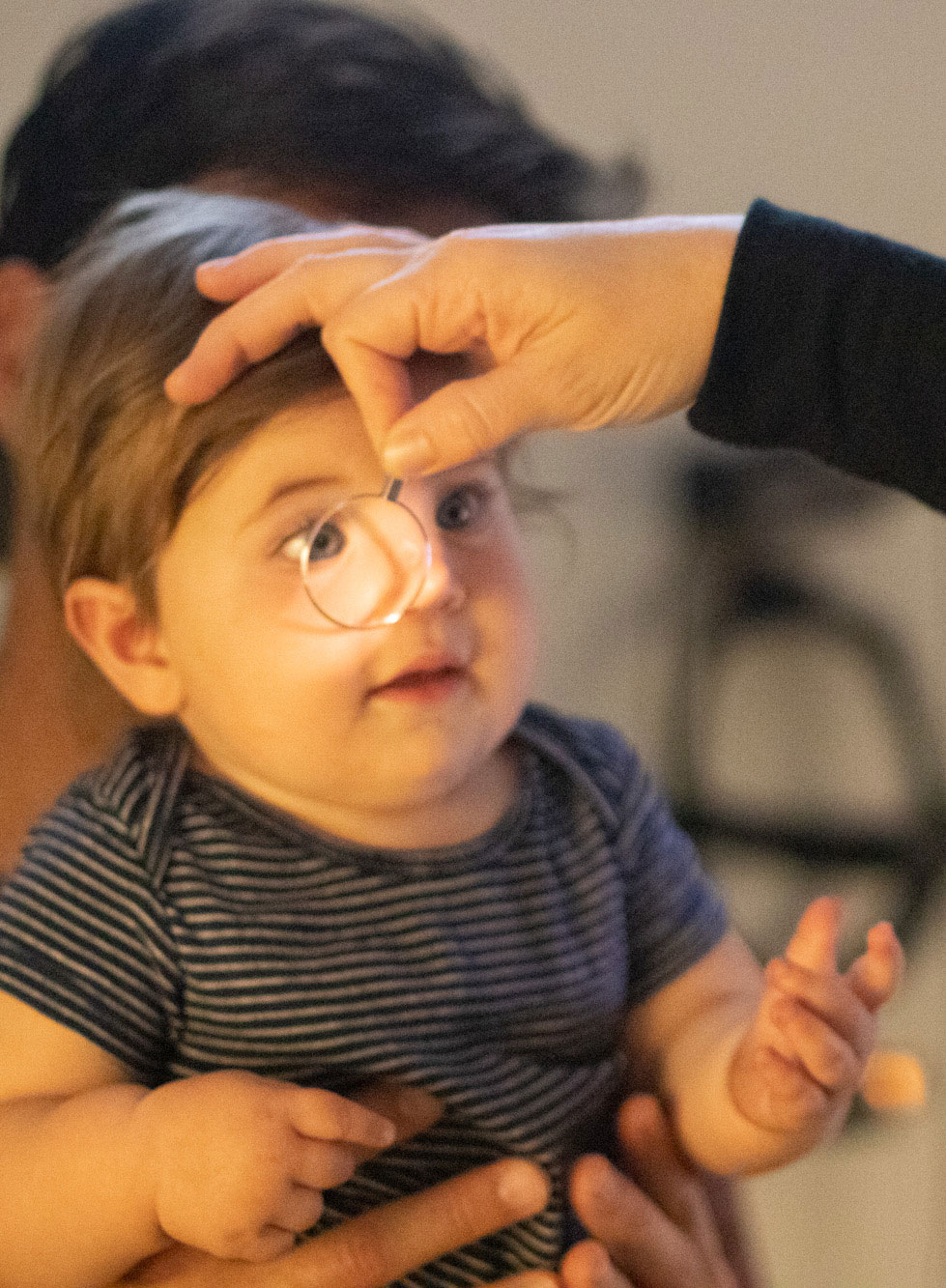Infant and Pediatric Examinations
We offer exams for children as young as six months old (per the American Optometric Association). See below for more details, or contact us now to schedule an appointment.

About
Your Child’s Eyes
Babies learn how to see just like they learn any other skill: through practice. From seeing light and dark patterns, to learning to reach, grasp, and eventually aim the eyes correctly, babies’ eyes are in constant and rapid development. While most infants’ visual development proceeds smoothly, a number of factors can prevent this from happening properly.
Furthermore, as your child grows, they will usually not be able to let you know if their vision is sub-par. The way they see is the way they are accustomed to seeing. Poor eye movement skills, poor focusing, differences between the two eyes, reduced depth perception, etc. will all appear normal to a child.
How We Can Help
Because these and other vision problems among children are more prevalent than most people realize, new health care laws have made vision coverage a mandatory new benefit through age 19.
Book an appointment
The docs at Plaza Lane Optometry (and the American Optometric Association) recommend having a well baby check-up between 6-12 months of age, followed by routine exams every 2 years if development is proceeding smoothly.
infantSEE®
We provide a unique service called InfantSEE®, sponsored by the American Optometric Association. We provide a complimentary well baby visual screening for infants 6-12 months old. Call us to schedule an appointment for your infant, child or you. We want to help maximize your entire family’s vision, no matter how old they are.
FAQ
Frequently Asked Questions
What is STRABISMUS (CROSSED EYES)?
Occurs when your eyes are not properly aligned with each other. In some cases, one eye looks directly forward while the other is either turned away from the nose (wall-eyed or exotropia), toward the nose (cross-eyed or esotropia), or higher or lower (vertical misalignment) than the other eye. Signs of crossed-eyes usually appear between birth and the age of 2.
What is AMBLYOPIA (Lazy Eye)?
An unexplained loss or lack of visual development in one eye. Even though no disease is present and proper corrective lenses are prescribed, the visual acuity of one eye is still below normal. Strabismus and/or a difference in refraction between the right and left eye is usually the cause of amblyopia. Signs of lazy eye may not be apparent in children, as the good eye may see well and mask visual symptoms.
